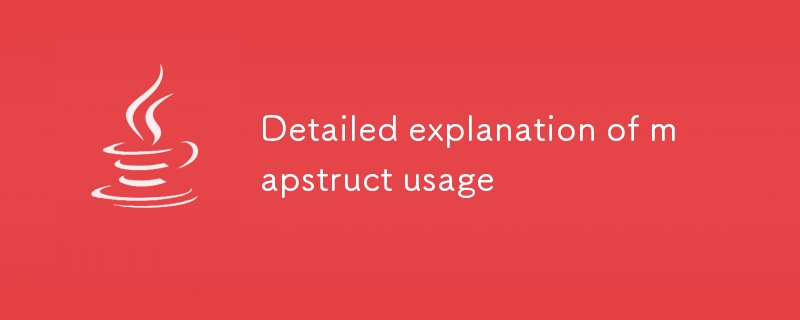
MapStruct is an annotation-based Java mapping tool that automates object mapping, reducing manual effort and errors. It streamlines the mapping process by using annotations to define mapping rules, providing both simplicity and performance advantages

How to leverage annotations to automate object mapping with MapStruct?
MapStruct is a Java annotation processing tool that simplifies the process of mapping objects from one class to another. It uses annotations to define the mapping rules, and then generates the mapping code at compile time. This eliminates the need to manually write the mapping code, which can be time-consuming and error-prone.
To use MapStruct, you first need to define a mapping interface. The mapping interface defines the methods that will be used to map objects. The methods are annotated with @Mapping annotations, which specify the mapping rules.
For example, the following mapping interface maps aCustomerobject to aCustomerDTOobject:Customerobject to aCustomerDTOobject:
@Mapping(source = "id", target = "customerId") @Mapping(source = "name", target = "customerName") interface CustomerMapper { CustomerDTO toDto(Customer customer); }Once you have defined the mapping interface, you can use it to map objects. To map an object, you simply call the corresponding method on the mapping interface. For example, the following code maps aCustomerobject to aCustomerDTOobject:
Customer customer = new Customer(); customer.setId(1L); customer.setName("John Doe"); CustomerDTO customerDTO = customerMapper.toDto(customer);The generated mapping code will handle the mapping of the fields between theCustomerobject and theCustomerDTOrrreee
Customerobject to a
CustomerDTOobject:
rrreeeThe generated mapping code will handle the mapping of the fields between theCustomerobject and theCustomerDTOobject.
What are the advantages of using MapStruct over other mapping libraries?
MapStruct is extensible. You can customize the generated mapping code to meet your specific business requirements. This allows you to use MapStruct to map objects in a way that is tailored to your specific application.
How can I customize MapStruct mappings to meet specific business requirements?
The above is the detailed content of Detailed explanation of mapstruct usage. For more information, please follow other related articles on the PHP Chinese website!
 How to enable TFTP server
How to enable TFTP server How to clean up your computer's C drive when it's full
How to clean up your computer's C drive when it's full How to check MD5 value
How to check MD5 value There are several ways to position CSS position
There are several ways to position CSS position What are the methods to download videos from Douyin?
What are the methods to download videos from Douyin? What does wifi deactivated mean?
What does wifi deactivated mean? How to execute scheduled tasks in java
How to execute scheduled tasks in java What are the dos commands?
What are the dos commands?



